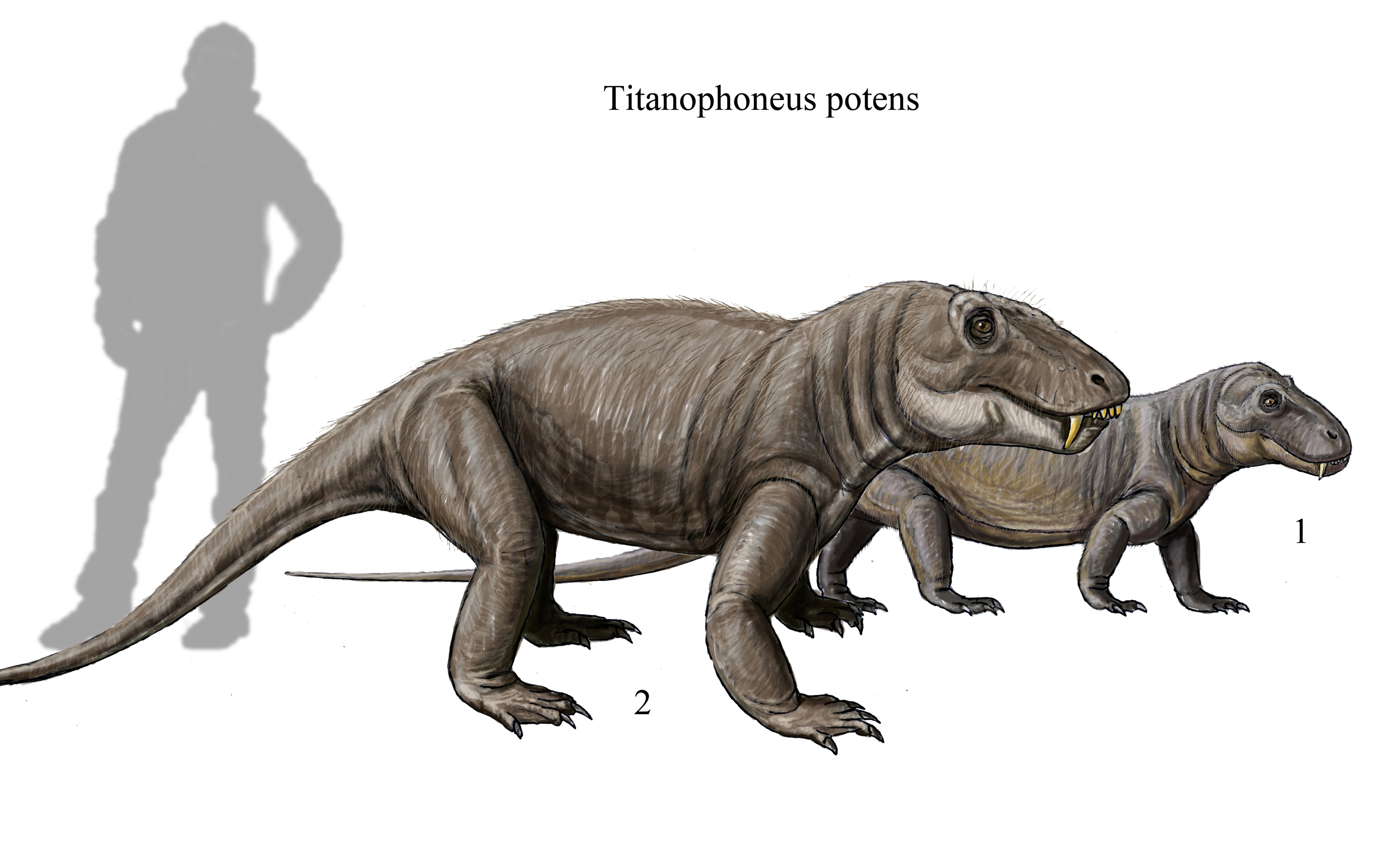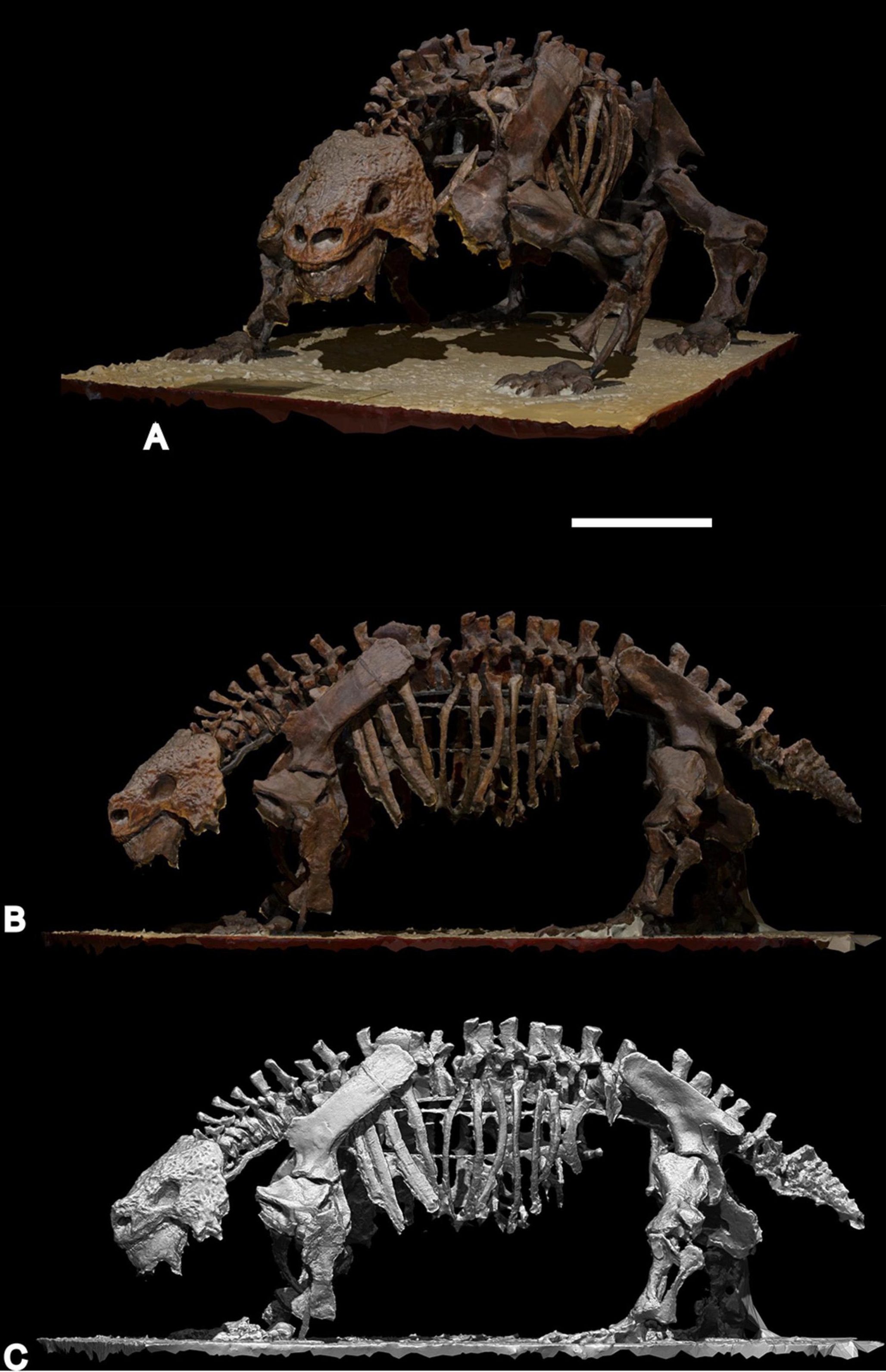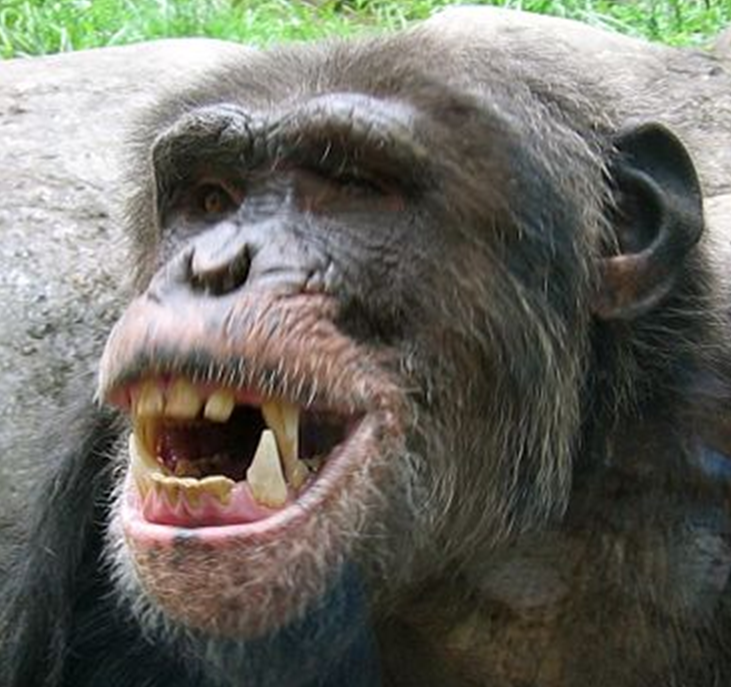|
Rhipaeosauridae
Nycteroleteridae is a family of procolophonian parareptilians (extinct early reptiles) from the Middle to Late Permian of Russia and North America. They are sometimes classified as a sister group to pareiasaurids (but see ''Classification)''. The group includes the genera '' Macroleter'', '' Bashkyroleter'', ''"Bashkyroleter" mesensis'', ''Nycteroleter'', ''Emeroleter'', and probably ''Rhipaeosaurus''. They were carnivorous, and occasionally ate insects. The group was most common in European Russia, with only a few fossils in North America. One fossil has also been found in Africa, but this is the only one from Gondwana. Classification Nycteroleteridae is sometimes considered a sister group to the Pareiasauridae, but Bayesian inference suggests that it was in fact paraphyletic, with ''Rhipaeosaurus'' a basal member of the Pareiasauridae and other members of the Nycteroleteridae as outgroups. This is supported by the appearance of ''Rhipaeosaurus skull and teeth - it had tricu ... [...More Info...] [...Related Items...] OR: [Wikipedia] [Google] [Baidu] |
Rhipaeosaurus
''Rhipaeosaurus'' is an extinct genus of nycteroleterid parareptile known from an articulated skeleton from the mid Middle Permian of European Russia. It contained a single species, ''Rhipaeosaurus tricuspidens''. A bayesian analysis suggests that it is more closely related to pareiasaurs than to the other nycteroleterids, due to skull and tooth features. For this reason, "Nycteroleteridae" may be a grade rather than a clade, unless redefined to exclude ''Rhipaeosaurus''. Description ''Rhipaeosaurus'' is around a meter long, larger than any other "nycteroleterids" and closer in size to later pareiasaurs. Postcranial remains were similar to '' Macroleter'', though the limbs were more robust and the ankle bones were unfused. The teeth were flattened and tricuspid (possessing three cusps), seemingly intermediate in form between the one- or two-cusped teeth of earlier nycteroleterids and the multi-cusped teeth of pareiasaurs. Many components of the partial skull and skelet ... [...More Info...] [...Related Items...] OR: [Wikipedia] [Google] [Baidu] |
Procolophonia
The Procolophonia are a suborder of herbivorous reptiles that lived from the Middle Permian till the end of the Triassic period. They were originally included as a suborder of the Cotylosauria (later renamed Captorhinida Carroll 1988) but are now considered a clade of Parareptilia. They are closely related to other generally lizard-like Permian reptiles such as the Millerettidae, Bolosauridae, Acleistorhinidae, and Lanthanosuchidae, all of which are included under the Anapsida or "Parareptiles" (as opposed to the Eureptilia). Classification There are two main groups of Procolophonia, the small, lizard-like Procolophonoidea, and the Pareiasauroidea, which include the large, armoured Pareiasauridae. According to the traditional classification of Carroll 1988 as well as recent phylogenetic analyses, smaller groups like Rhipaeosauridae (now a synonym of Nycteroleteridae) and Sclerosauridae are classified with the pareiasaurs and with the procolophonids, respectively. T ... [...More Info...] [...Related Items...] OR: [Wikipedia] [Google] [Baidu] |
Middle Permian
The Guadalupian is the second and middle series/ epoch of the Permian. The Guadalupian was preceded by the Cisuralian and followed by the Lopingian. It is named after the Guadalupe Mountains of New Mexico and Texas, and dates between 272.95 ± 0.5 – 259.1 ± 0.4 Mya. The series saw the rise of the therapsids, a minor extinction event called Olson's Extinction and a significant mass extinction called the end-Capitanian extinction event. The Guadalupian was previously known as the Middle Permian. Name and background The Guadalupian is the second and middle series or epoch of the Permian. Previously called Middle Permian, the name of this epoch is part of a revision of Permian stratigraphy for standard global correlation. The name "Guadalupian" was first proposed in the early 1900s, and approved by the International Subcommission on Permian Stratigraphy in 1996. References to the Middle Permian still exist. The Guadalupian was preceded by the Cisuralian and followed by ... [...More Info...] [...Related Items...] OR: [Wikipedia] [Google] [Baidu] |
Gondwana
Gondwana () was a large landmass, often referred to as a supercontinent, that formed during the late Neoproterozoic (about 550 million years ago) and began to break up during the Jurassic period (about 180 million years ago). The final stages of break-up, involving the separation of Antarctica from South America (forming the Drake Passage) and Australia, occurred during the Paleogene. Gondwana was not considered a supercontinent by the earliest definition, since the landmasses of Baltica, Laurentia, and Siberia were separated from it. To differentiate it from the Indian region of the same name (see ), it is also commonly called Gondwanaland. Gondwana was formed by the accretion of several cratons. Eventually, Gondwana became the largest piece of continental crust of the Palaeozoic Era, covering an area of about , about one-fifth of the Earth's surface. During the Carboniferous Period, it merged with Laurasia to form a larger supercontinent called Pangaea. Gondwana ... [...More Info...] [...Related Items...] OR: [Wikipedia] [Google] [Baidu] |
Palate
The palate () is the roof of the mouth in humans and other mammals. It separates the oral cavity from the nasal cavity. A similar structure is found in crocodilians, but in most other tetrapods, the oral and nasal cavities are not truly separated. The palate is divided into two parts, the anterior, bony hard palate and the posterior, fleshy soft palate (or velum). Structure Innervation The maxillary nerve branch of the trigeminal nerve supplies sensory innervation to the palate. Development The hard palate forms before birth. Variation If the fusion is incomplete, a cleft palate results. Function When functioning in conjunction with other parts of the mouth, the palate produces certain sounds, particularly velar, palatal, palatalized, postalveolar, alveolopalatal, and uvular consonants. History Etymology The English synonyms palate and palatum, and also the related adjective palatine (as in palatine bone), are all from the Latin ''palatum'' via Old F ... [...More Info...] [...Related Items...] OR: [Wikipedia] [Google] [Baidu] |
Parietal Eye
A parietal eye, also known as a third eye or pineal eye, is a part of the epithalamus present in some vertebrates. The eye is located at the top of the head, is photoreceptive and is associated with the pineal gland, regulating circadian rhythmicity and hormone production for thermoregulation. The hole in the head which contains the eye is known as a pineal foramen or parietal foramen, since it is often enclosed by the parietal bones. Presence in various animals The parietal eye is found in the tuatara, most lizards, frogs, salamanders, certain bony fish, sharks, and lampreys. It is absent in mammals, but was present in their closest extinct relatives, the therapsids, suggesting it was lost during the course of the mammalian evolution due to it being useless in endothermic animals. It is also absent in the ancestrally endothermic ("warm-blooded") archosaurs such as birds. The parietal eye is also lost in ectothermic ("cold-blooded") archosaurs like crocodilians, and in turtl ... [...More Info...] [...Related Items...] OR: [Wikipedia] [Google] [Baidu] |
Parietal Bone
The parietal bones () are two bones in the skull which, when joined at a fibrous joint, form the sides and roof of the cranium. In humans, each bone is roughly quadrilateral in form, and has two surfaces, four borders, and four angles. It is named from the Latin ''paries'' (''-ietis''), wall. Surfaces External The external surface ig. 1is convex, smooth, and marked near the center by an eminence, the parietal eminence (''tuber parietale''), which indicates the point where ossification commenced. Crossing the middle of the bone in an arched direction are two curved lines, the superior and inferior temporal lines; the former gives attachment to the temporal fascia, and the latter indicates the upper limit of the muscular origin of the temporal muscle. Above these lines the bone is covered by a tough layer of fibrous tissue – the epicranial aponeurosis; below them it forms part of the temporal fossa, and affords attachment to the temporal muscle. At the back part and clos ... [...More Info...] [...Related Items...] OR: [Wikipedia] [Google] [Baidu] |
Otic Notch
Otic notches are invaginations in the posterior margin of the skull roof, one behind each orbit. Otic notches are one of the features lost in the evolution of amniotes from their tetrapod ancestors. The notches have been interpreted as part of an auditory structure and are often reconstructed as holding a tympanum similar to those seen in modern anurans. Analysis of the ''columella'' (the stapes in amphibians and reptiles) of labyrinthodonts however indicates that it did not function in transmitting low-energy vibrations, thus rendering these animals effectively deaf to airborne sound. The otic notch instead functioned as a spiracle, at least in the early forms.Laurin, M. (1996)Hearing in Stegocephalians from the Tree of Life Web Project The Tree of Life Web Project is an Internet project providing information about the diversity and phylogeny of life on Earth. This collaborative peer reviewed project began in 1995, and is written by biologists from around the world. The ... [...More Info...] [...Related Items...] OR: [Wikipedia] [Google] [Baidu] |
Cutting
Cutting is the separation or opening of a physical object, into two or more portions, through the application of an acutely directed force. Implements commonly used for cutting are the knife and saw, or in medicine and science the scalpel and microtome. However, any sufficiently sharp object is capable of cutting if it has a hardness sufficiently larger than the object being cut, and if it is applied with sufficient force. Even liquids can be used to cut things when applied with sufficient force (see water jet cutter). Cutting is a compressive and shearing phenomenon, and occurs only when the total stress generated by the cutting implement exceeds the ultimate strength of the material of the object being cut. The simplest applicable equation is: \text = or \tau=\frac The stress generated by a cutting implement is directly proportional to the force with which it is applied, and inversely proportional to the area of contact. Hence, the smaller the area (i.e., the sh ... [...More Info...] [...Related Items...] OR: [Wikipedia] [Google] [Baidu] |
Nycteroleterinae
Nycteroleterinae is a subfamily of procolophonian parareptiles from the Middle Permian The Guadalupian is the second and middle series/ epoch of the Permian. The Guadalupian was preceded by the Cisuralian and followed by the Lopingian. It is named after the Guadalupe Mountains of New Mexico and Texas, and dates between 272.95 ... of Asia and North America. References * Prehistoric reptile taxonomy Tetrapod subfamilies {{paleo-reptile-stub ... [...More Info...] [...Related Items...] OR: [Wikipedia] [Google] [Baidu] |
Scutosaurus
''Scutosaurus'' ("shield lizard") is an extinct genus of pareiasaur parareptiles. Its genus name refers to large plates of armor scattered across its body. It was a large anapsid reptile that, unlike most reptiles, held its legs underneath its body to support its great weight. Fossils have been found in the Sokolki Assemblage Zone of the Malokinelskaya Formation in European Russia, close to the Ural Mountains, dating to the late Permian (Lopingian) between 264 and 252 million years ago. Research history The first fossils were uncovered by Russian paleontologist Vladimir Prokhorovich Amalitskii while documenting plant and animal species in the Upper Permian sediments in the Northern Dvina River, Arkhangelsk District, Northern European Russia. Amalitskii had discovered the site in 1899, and he and his wife Anne Amalitskii continued to oversee excavation until 1914, recovering numerous nearly complete and articulated (in their natural position) skeletons belonging to a menage ... [...More Info...] [...Related Items...] OR: [Wikipedia] [Google] [Baidu] |
Tooth
A tooth ( : teeth) is a hard, calcified structure found in the jaws (or mouths) of many vertebrates and used to break down food. Some animals, particularly carnivores and omnivores, also use teeth to help with capturing or wounding prey, tearing food, for defensive purposes, to intimidate other animals often including their own, or to carry prey or their young. The roots of teeth are covered by gums. Teeth are not made of bone, but rather of multiple tissues of varying density and hardness that originate from the embryonic germ layer, the ectoderm. The general structure of teeth is similar across the vertebrates, although there is considerable variation in their form and position. The teeth of mammals have deep roots, and this pattern is also found in some fish, and in crocodilians. In most teleost fish, however, the teeth are attached to the outer surface of the bone, while in lizards they are attached to the inner surface of the jaw by one side. In cartilaginous fi ... [...More Info...] [...Related Items...] OR: [Wikipedia] [Google] [Baidu] |





